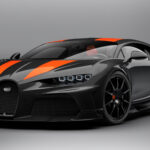Three main features distinguish all Lamborghini cars. The hexagonal shape, the Y-shaped design, and the cutting-edge performance are all features that make Lamborghini models stand out. How much is the weight of a Lamborghini ?.
The average weight for a Lamborghini car is 1,692 kilograms (3,730 pounds). Lamborghini Huracan S is the lightest model at 1,339kg (2,951lbs), and the Lamborghini Urus S is the heaviest at 2,197 kilograms (4,842lbs). These vehicles’ weight does not compromise their distinctive design or high performance.
This article gives a brief overview of the eighteen Lamborghini currently on sale.
Lamborghinis Weight
There are 18 different Lamborghini models available today.
Lamborghinis currently available in the market are:
| Lamborghini Model | Dry Weight |
|---|---|
| Aventador LP 780-4 Ultimae | 1.550 kg (3.417 lbs). |
| Aventador LP 780-4 Ultimae Roadster | 1,600 kg (3.527 lbs). |
| Aventador SVJ | 1,525 kg (3.362 lbs). |
| Aventador SVJ Roadster | 1,575 kg (3.472 lbs). |
| Huracan Tecnica | 1,379 kg (3.040 lbs). |
| Huracan STO | 1,339 kg (2.951 lbs). |
| Huracan Evo | 1,422 kg (3.134 lbs) |
| Huracan Evo spyder | 1542 kg (3.400 lbs) |
| Huracan Evo RWD | 1,389 kg (3.062 lbs). |
| Huracan Evo RWD Spyder | 1,509 kg (3 326 lbs) |
| Urus S | 2,197 kg (4.842 lbs). |
| Urus Performante | 2,150 kg (4.739 lbs.) |
| Urus | 2,150 kg (4.739 lbs.) |
| Urus Pearl Capsule | 2,150 kg (4.739 lbs.) |
| Urus Graphite Capsule | 2,150 kg (4.739 lbs.) |
| Countach LPI 800-4 | 1,595 kg (3.516 lbs). |
| Sian FKP 37 | 1,595 kg (3.516 lbs). |
| Sian Roadster | 1,645kg (3,626 lbs) |
The average weight of a Lamborghini car is 1,692kg (3,730lbs).. To put it into perspective, the average car weight comes in at 1,860 kg (or 4,100 lbs). This means that Lamborghini is, like most supercar brands, a pretty light vehicle.
Let’s take a closer look at each of these Lamborghini model.
Lamborghini Aventador LP 780-4 Ultimae

The Lamborghini Aventador, a limited-edition supercar, has an engine in the middle of the car to improve its balance and handling. The Aventador is the second-most popular Lamborghini ever.
| Specification | Measure |
|---|---|
| Dry Weight | 1.550 kg (3.417 lbs). |
| Engine | 6.4 liter V12, 60deg, MPI (Multi Point Injection) |
| Maximum Power | 780 CV (574kW) at 8,500 revs |
| Top Speed | 220 mph (355 km/h) |
| Acceleration of 0 to 100 Km/h | 2.8 seconds |
| Acceleration: 0 to 200 Km/h | 8.7 Seconds |
Lamborghini Aventador LP 780-4 Ultimae Roadster

source:lamborghini
This is a convertible with an open roof. The model is designed to be driven with the roof open, allowing fresh air to blow through. However, additional structural measures are required in order to maintain a rigid body. This increases the weight of the vehicle by 50kgs.
| Specification | Measure |
|---|---|
| Dry Weight | 1,600 kg (3.527 lbs). |
| Engine | 6.4 liter V12, 60deg, MPI (Multi Point Injection) |
| Maximum Power | 780 CV (574kW) at 8,500 revs |
| Top Speed | 220 mph (355 km/h) |
| Acceleration of 0 to 100 Km/h | 2.9 seconds |
| Acceleration: 0-200 km/h | 8.9 Seconds |
Lamborghini Aventador SVJ
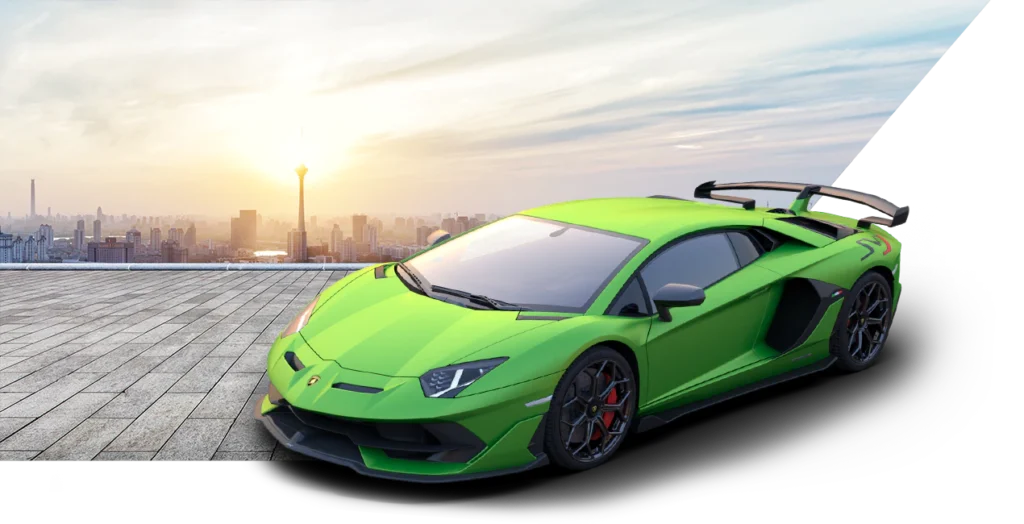
The Aventador SVJ has a lower power version of the Aventador LP780-4 Ultimae.
| Specification | Measure |
|---|---|
| Dry Weight | 1,525 kg (3.362 lbs). |
| Engine | 6.4 liter V12, 60deg, MPI (Multi Point Injection) |
| Maximum Power | 770 CV (566kW) at 8,500 revs |
| Top Speed | 217 Mph (350 km/h) |
| Acceleration of 0 to 100 Km/h | 2.8 seconds |
| Acceleration: 0-200 km/h | 8.8 Seconds |
Lamborghini Aventador SVJ Roadster

Aventador SVJ Roadster has a slightly lower power than the Aventador LP 780-4 Ultimae Roadster.
| Specification | Measure |
|---|---|
| Dry Weight | 1,575 kg (3.472 lbs). |
| Engine | 6.4 liter V12, 60deg, MPI (Multi Point Injection) |
| Maximum Power | 770 CV (566kW) at 8,500 revs |
| Top Speed | 217 Mph (350 km/h) |
| Acceleration of 0 to 100 Km/h | 2.9 seconds |
| Acceleration: 0-200 km/h | 8.8 Seconds |
Lamborghini Huracan Tecnica
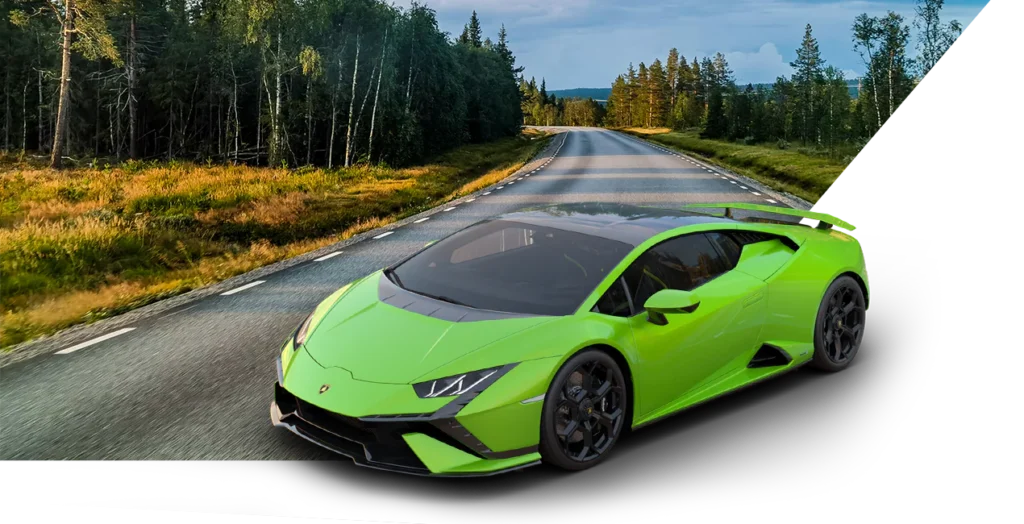
The Huracan line was launched for the first time at the Geneva Motor Show in 2014. Lamborghini has sold a lot of the model range.
| Specification | Measure |
|---|---|
| Dry Weight | 1,379 kg (3.040 lbs). |
| Engine | 5.2 liters V10 |
| Maximum Power | 640 CV (470kW) at 8000 rpm |
| Top Speed | 200 Mph (350 km/h) |
| Acceleration from 0 to 100 Km/h | 3.2 Seconds |
| Acceleration: 0-200 km/h | 9.1 seconds |
Lamborghini Huracan STO

The Lamborghini Huracan STO is 40 kg lighter than the Tecnica. This reduces the 0-100 km/h time to just 3.00 seconds.
| Specification | Measure |
|---|---|
| Dry Weight | 1 339 kg (2 951 lbs. |
| Engine | 5.2 liters V10 |
| Maximum Power | 640 CV (470kW) at 8000 rpm |
| Top Speed | 200 Mph (350 km/h) |
| Acceleration from 0 to 100 Km/h | 3.0 seconds |
| Acceleration: 0 to 200 Km/h | 9.0 seconds |
Lamborghini Huracan Evo
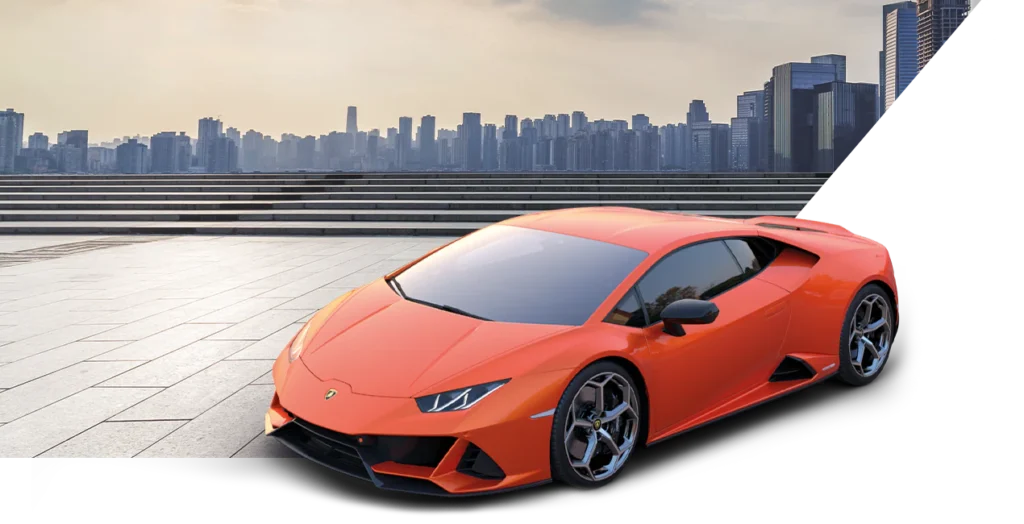
Lamborghini continues to strive to improve the performance of their models.
The increased torque of 600 Nm (44 lb.ft.) at 6,500 rpm, despite an 83 kg penalty over the HuracanSTO, achieves a 0.01-second improvement in 0-100km/h.
| Specification | Measure |
|---|---|
| Dry Weight | 1,422 kg (3.134 lbs) |
| Engine | 5.2 liter V10, 90deg, MPI (Multi Point Injection) + DSI (Direct Stratified Injection) |
| Maximum Power | 640 CV (470kW) at 8000 rpm |
| Top Speed | 200 Mph (350 km/h) |
| Acceleration of 0 to 100 Km/h | 2.9 seconds |
| Acceleration: 0-200 km/h | 9.0 seconds |
Lamborghini Huracan Evo Spyder
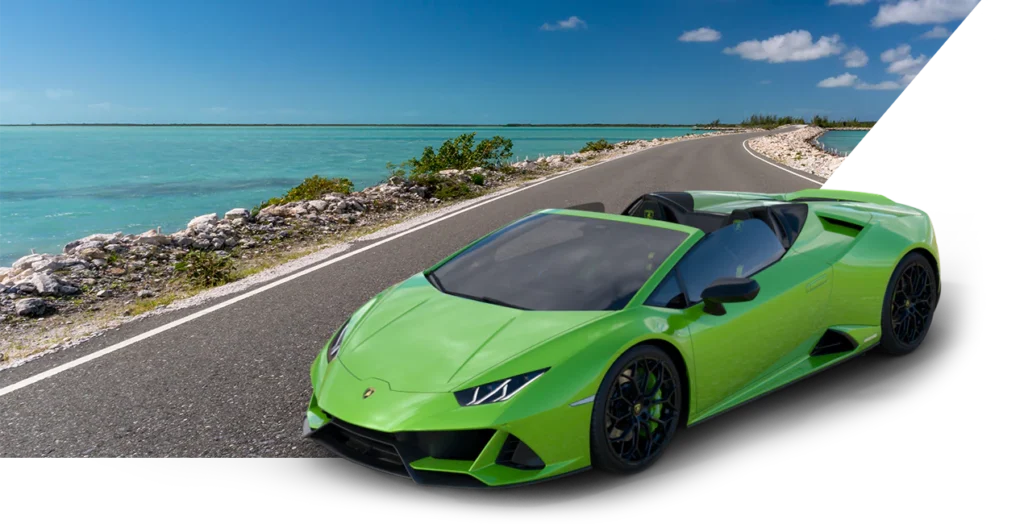
Due to the extra engineering required to keep the chassis rigid, the open-top Huracan “cabriolet”, imposes a 120 kg weight penalty.
| Specification | Measure |
|---|---|
| Dry Weight | 1542 kg (3.400 lbs) |
| Engine | 5.2 liter V10, 90deg, MPI (Multi Point Injection) + DSI (Direct Stratified Injection) |
| Maximum Power | 640 CV (470kW) at 8000 rpm |
| Top Speed | 200 Mph (350 km/h) |
| Acceleration of 0 to 100 Km/h | 3.1 Seconds |
| Acceleration: 0-200 km/h | 9.3 seconds |
Lamborghini Huracan Evo RWD
The weight of the vehicle is reduced by more than 150 kg when the four-wheel-drive system is replaced with two rear-driven wheels. Reduced traction results in an extra 0.4 seconds for 0 to 100 km/h compared to Evo.
| Specification | Measure |
|---|---|
| Dry Weight | 1,389 kg (3.062 lbs). |
| Engine | 5.2 liter V10, 90deg, MPI (Multi Point Injection) + DSI (Direct Stratified Injection) |
| Maximum Power | 610 CV (449kW) at 8000 rpm |
| Top Speed | 200 Mph (325 km/h) |
| Acceleration from 0 to 100 Km/h | 3.3 Seconds |
| Acceleration: 0-200 km/h | 9.3 seconds |
Lamborghini Huracan Evo RWD Spyder

Lamborghini’s Spider model is a car with a roof that has been removed. This allows for a more enjoyable driving experience.
| Specification | Measure |
|---|---|
| Dry Weight | 1509 kg (3 326 lbs. |
| Engine | 5.2 liter V10, 90deg, MPI (Multi Point Injection) + DSI (Direct Stratified Injection) |
| Maximum Power | 610 CV (449kW) at 8000 rpm |
| Top Speed | 199 Mph (324) |
| Acceleration from 0 to 100 Km/h | 3.5 Seconds |
| Acceleration: 0-200 km/h | 9.6 seconds |
Lamborghini Urus S
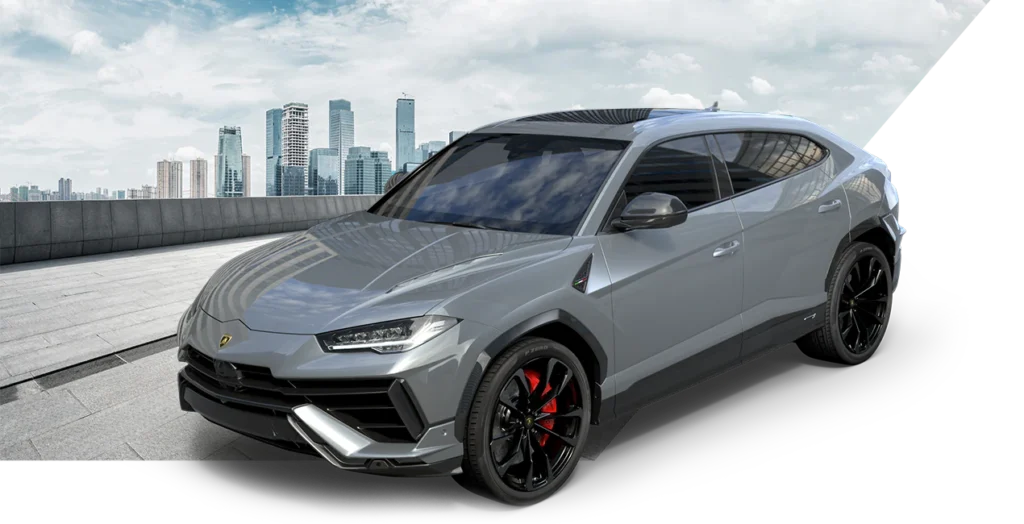
The Urus is arguably the most refined and competent supercar SUV ever produced. The only Lamborghini 5-seater still in production.
| Specification | Measure |
|---|---|
| Dry Weight | 2,197 kg (4.842 lbs). |
| Engine | 3,996 cm3 (243.85 cu in) 8-cylinder engine |
| Maximum Power | 666 CV (490kW) @ 6,00 rpm |
| Top Speed | 189 Mph 305 Km/h |
| Acceleration of 0 to 100 Km/h | 3.5 Seconds |
| Acceleration: 0-200 km/h | 12.5 seconds |
Lamborghini Urus Performante
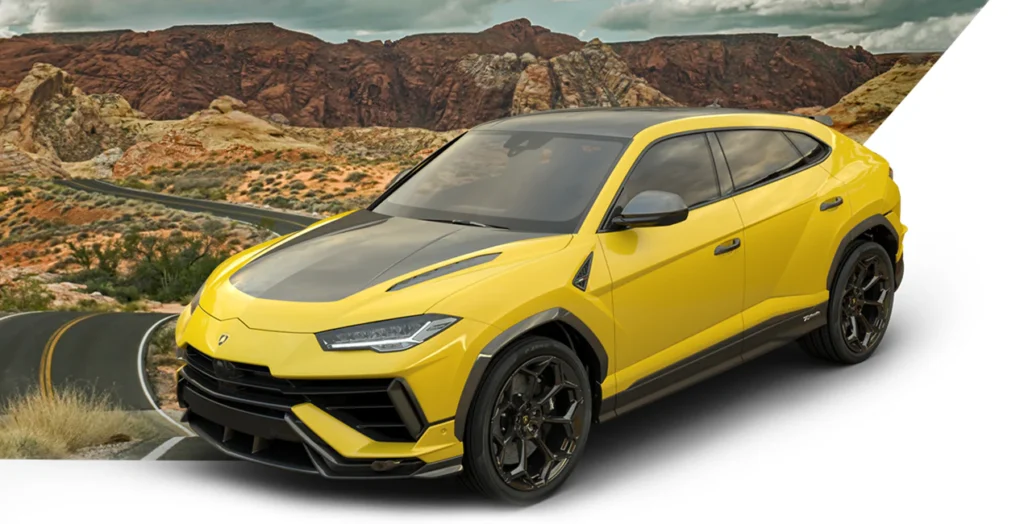
This SUV’s Performante version is lighter and faster than the Huracan Evo RWD Spyder, reducing the weight by 47kgs. It also reduces the acceleration time from 0 to 100km/h by 0.2 seconds.
| Specification | Measure |
|---|---|
| Dry Weight | 2,150 kg (4.739 lbs.) |
| Engine | 3,996 cm3 (243.85 cu in) 8-cylinder engine |
| Maximum Power | 666 CV (490kW) @ 6,00 rpm |
| Top Speed | 190 Mph (305 Km/hr) |
| Acceleration of 0 to 100 Km/h | 3.3 Seconds |
| Acceleration: 0-200 km/h | 11 Seconds |
Lamborghini Urus
The base model Urus is what Lamborghini calls it (if they could call it that).
| Specification | Measure |
|---|---|
| Dry Weight | 2,150 kg (4.739 lbs.) |
| Engine | 3,996 cm3 (243.85 cu in) 8-cylinder engine |
| Maximum Power | 650 CV (478kW) @ 6,00 rpm |
| Top Speed | 190 Mph (305 Km/hr) |
| Acceleration of 0 to 100 Km/h | 3.6 Seconds |
| Acceleration: 0-200 km/h | 12.8, Seconds |
Lamborghini Urus Pearl Capsule
The Urus model is available in a variety of pearl finishes. Performance is unchanged.
| Specification | Measure |
|---|---|
| Dry Weight | 2,150 kg (4.739 lbs.) |
| Engine | 3,996 cm3 (243.85 cu in) 8-cylinder engine |
| Maximum Power | 650 CV (478kW) @ 6,00 rpm |
| Top Speed | 190 Mph (305 Km/hr) |
| Acceleration of 0 to 100 Km/h | 3.6 Seconds |
| Acceleration: 0-200 km/h | 12.8, Seconds |
Lamborghini Urus Graphite Capsule
The model is available in various graphite finishes.
| Specification | Measure |
|---|---|
| Dry Weight | 2,150 kg (4.739 lbs.) |
| Engine | 3,996 cm3 (243.85 cu in) 8-cylinder engine |
| Maximum Power | 650 CV (478kW) @ 6,00 rpm |
| Top Speed | 190 Mph (305 Km/hr) |
| Acceleration of 0 to 100 Km/h | 3.6 Seconds |
| Acceleration: 0-200 km/h | 12.8, Seconds |
Lamborghini Countach Countach LPI 8004

In the 1970s, posters of the original Countach adorned the walls of boys’ bedrooms. The dream is now a reality for the grown-ups with the latest rendition of the classic.
| Specification | Measure |
|---|---|
| Dry Weight | 1,595 kg (3.516 lbs). |
| Engine | 6.5 liter V12, 60deg, MPI (Multi Point Injection) |
| Maximum Power | 780 CV (574kW) @ 8,500 revs |
| Top Speed | 220 mph (355 km/h) |
| Acceleration from 0 to 100 Km/h | 2.8 seconds |
| Acceleration: 0-200 km/h | 8.6 seconds |
Lamborghini Sian FKP 37

Lamborghini has made its first hybrid supercar and it does not disappoint.
| Specification | Measure |
|---|---|
| Dry Weight | 1,595 kg (3.516 lbs). |
| Engine | 6.5 liter V12, 60deg, MPI (Multi Point Injection) |
| Maximum Power | 780 CV (574kW) @ 8,500 revs |
| Top Speed | 220 mph (355 km/h) |
| Acceleration from 0 to 100 Km/h | 2.7 seconds |
| Acceleration: 0-200 km/h | 8.6 seconds |
Lamborghini Sian Roadster
The weight of the vehicle increases by 50 kg due to additional engineering.
| Specification | Measure |
|---|---|
| Dry Weight | 1,645kg (3,626 lbs) |
| Engine | 6.5 liter V12, 60deg, MPI (Multi Point Injection) |
| Maximum Power | 780 CV (574kW) @ 8,500 revs |
| Top Speed | 217 mph (351 Km/hr) |
| Acceleration from 0 to 100 Km/h | n/a |
| Acceleration: 0-200 km/h | n/a |
Factors that affect the weight of a Lamborghini
Weight is an essential factor when it comes to supercars. The weight of a car is determined by several factors, particularly for a refined brand like Lamborghini. We’ll look at what factors influence the weight of these iconic Italian vehicles:
- Materials and Construction. The choice and application of material are among the cornerstones of Lamborghini’s engineering prowess. Carbon fiber is popular because of its strength and lightweight properties. Lamborghini uses this material extensively, particularly in its monocoque body panels and interiors. This balances structural rigidity, weight savings, and light materials. The brand uses aluminum, composites, and carbon fiber in different parts of its vehicles. Focus is always placed on achieving the perfect balance between durability and weight.
- Engines and Transmission: Each engine has its weight profile. Lamborghini has a range of engines, from V10s up to V12s. Each engine is unique. While a V12 has a higher power output, it naturally weighs more. The type of transmission, its components, and the exhaust system will also impact overall weight.
- Onboard Technology In today’s tech-centric world, vehicles are loaded with advanced systems. The technology is a significant contributor to the complexity and weight of the car. It adds layers from the Lamborghini Dinamica Veicolo Integrated (LDVI) that optimize the vehicle’s dynamics to the high-resolution displays for infotainment and the advanced sound system. These systems are essential to a modern and holistic driving experience.
- Performance and Aerodynamic Components A supercar’s aerodynamic profile is more than just a way to glide through the air. It also includes active and passive components which manage airflow. Lamborghini aerodynamic systems that adjust in real-time based on driving conditions come with their weight. Performance-oriented components, such as more extensive brake systems to improve stopping power or reinforced suspension systems to optimize handling, can also add mass.
- Customizations and Optional Features. The Ad Personam program by Lamborghini allows customers to customize their vehicles according to their tastes. These customizations can affect the weight of a car, as well as its aesthetics and functionality. Due to their bespoke features, two Lamborghinis that appear identical may have slight differences in weight.
Why does weight matter?
In the world of automobiles, weight is a crucial factor. This is especially true for supercars and vehicles with high performance. Each kilogram or pound makes a difference, whether on the racetrack or the road. Insights into vehicle dynamics, performance nuance, and efficiency metrics can be gained by examining the importance of weight. This comprehensive guide will explain why weight is so important:
- Performance Dynamics: The quest for a supercar’s exhilarating performances is at the core of all supercars, including Lamborghinis. The weight of a vehicle directly affects its acceleration abilities. The engine moves less mass when the car is lighter, so it accelerates faster. It is most evident in straight-line sprints, where even a few extra kilograms can save valuable milliseconds.
- Braking and Deceleration: While acceleration is the focus of attention, a vehicle’s deceleration ability is equally important. Lighter vehicles require less energy to stop and can, therefore, brake more precisely. With advanced braking systems, high-performance cars can use the reduced weight to offer shorter stopping distances and increased safety.
- Agility and Handling One of the pleasures of driving a Supercar is its agility around corners and curves. Weight and distribution of the vehicle are crucial to handling dynamics. The driving experience is more enjoyable when the car’s weight is evenly distributed. It responds predictably to the steering inputs and maintains its line in corners. The center of gravity can be shifted around lighter cars, particularly those with rear- or mid-engine layouts. This makes them more agile and responsive.
- Fuel Economy and Range Beyond the vehicle’s raw performance, its weight can impact its operational Efficiency. In general, a lighter vehicle consumes less gasoline or, for electric cars, requires less battery power to travel the same distance. This can translate to a more extended range, less refueling, and potential savings over time.
- Wear and tear Heavier vehicles may put more strain on the components. Weight increases can cause wear on tires, brakes, suspension, and other components. Lamborghini, for example, optimizes weight to ensure longevity, reduce maintenance intervals, and keep the vehicle performing at its best.
- Aerodynamic Efficiency While weight and aerodynamics may seem separate, they are inextricably linked. Using lighter materials allows engineers to sculpt the body of a vehicle more efficiently, improving airflow and reducing drag while increasing downforce. It improves performance and fuel Efficiency and increases stability at high speed.
CONCLUSION
Lamborghini is a brand committed to innovation, performance, and design. The weights of the vehicles vary depending on a variety of factors. However, the goal remains to create machines that provide an unmatched driving experience. Understanding the weight dynamics of these iconic vehicles is a great way for enthusiasts to appreciate what goes into their creations. No matter if you are a fan, a collector, or just curious, the weight of the raging tiger and its intricacies will always be a draw.
Related topic: G-wagon years to avoid








